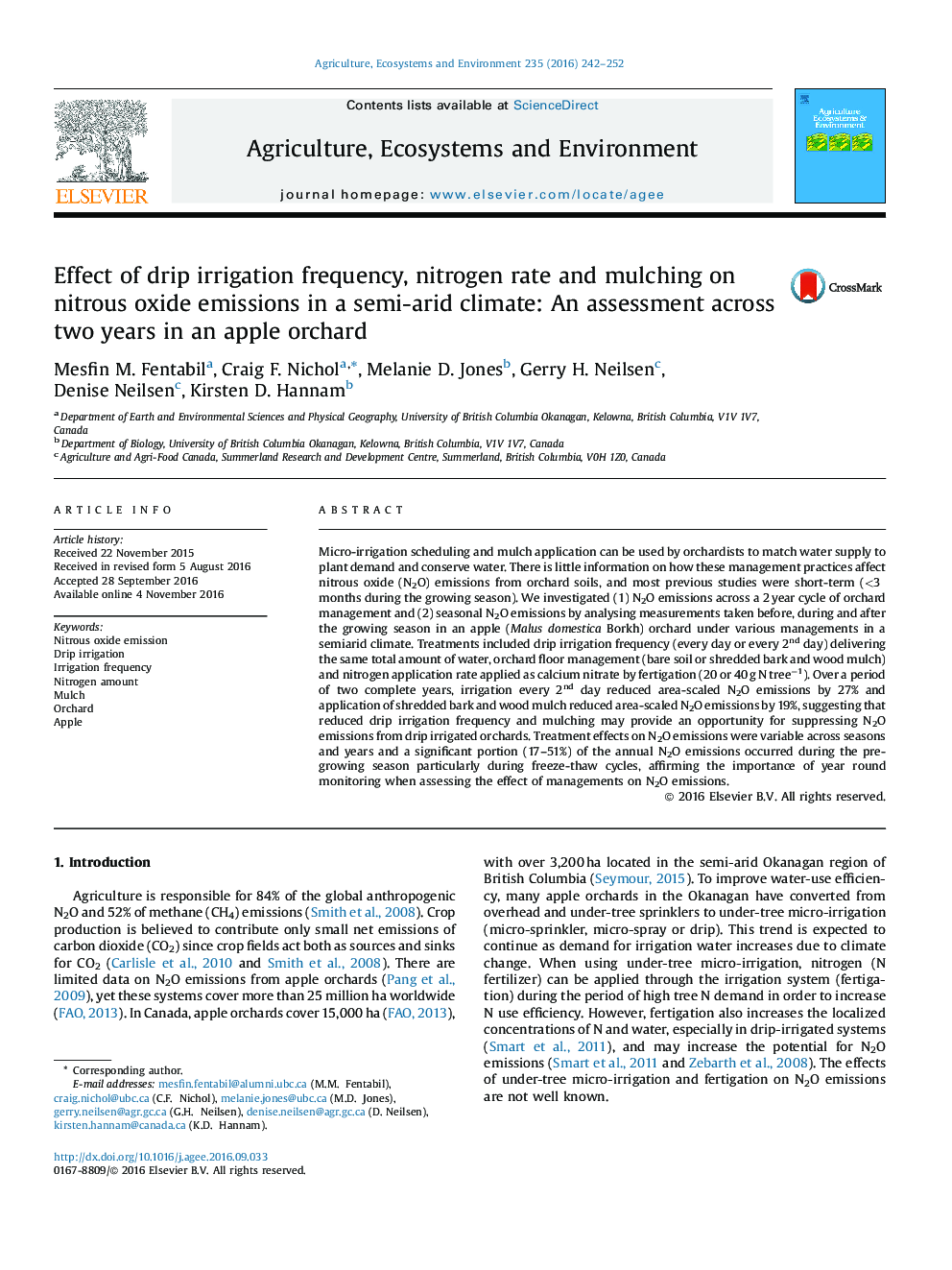| کد مقاله | کد نشریه | سال انتشار | مقاله انگلیسی | نسخه تمام متن |
|---|---|---|---|---|
| 5538086 | 1552017 | 2016 | 11 صفحه PDF | دانلود رایگان |
- Bark and wood mulch reduced nitrous oxide emissions by 19% over a period of two years.
- Lower drip irrigation frequency reduced nitrous oxide emissions by 27%.
- Multi-year continuous monitoring of nitrous oxide emissions may be important.
Micro-irrigation scheduling and mulch application can be used by orchardists to match water supply to plant demand and conserve water. There is little information on how these management practices affect nitrous oxide (N2O) emissions from orchard soils, and most previous studies were short-term (<3 months during the growing season). We investigated (1) N2O emissions across a 2 year cycle of orchard management and (2) seasonal N2O emissions by analysing measurements taken before, during and after the growing season in an apple (Malus domestica Borkh) orchard under various managements in a semiarid climate. Treatments included drip irrigation frequency (every day or every 2nd day) delivering the same total amount of water, orchard floor management (bare soil or shredded bark and wood mulch) and nitrogen application rate applied as calcium nitrate by fertigation (20 or 40 g N treeâ1). Over a period of two complete years, irrigation every 2nd day reduced area-scaled N2O emissions by 27% and application of shredded bark and wood mulch reduced area-scaled N2O emissions by 19%, suggesting that reduced drip irrigation frequency and mulching may provide an opportunity for suppressing N2O emissions from drip irrigated orchards. Treatment effects on N2O emissions were variable across seasons and years and a significant portion (17-51%) of the annual N2O emissions occurred during the pre-growing season particularly during freeze-thaw cycles, affirming the importance of year round monitoring when assessing the effect of managements on N2O emissions.
Journal: Agriculture, Ecosystems & Environment - Volume 235, 1 November 2016, Pages 242-252
